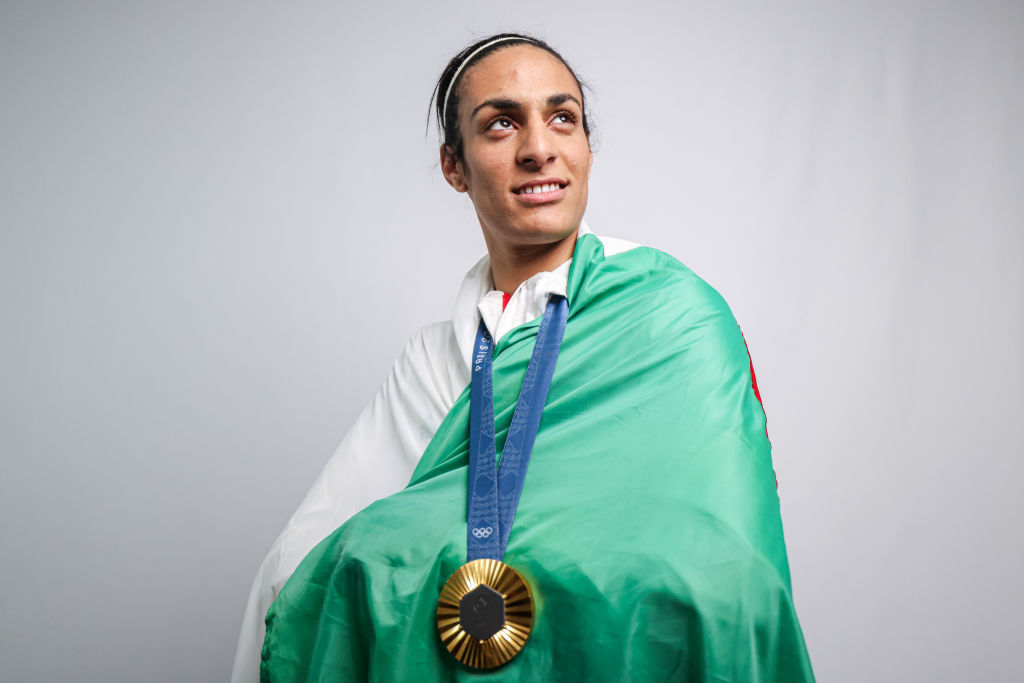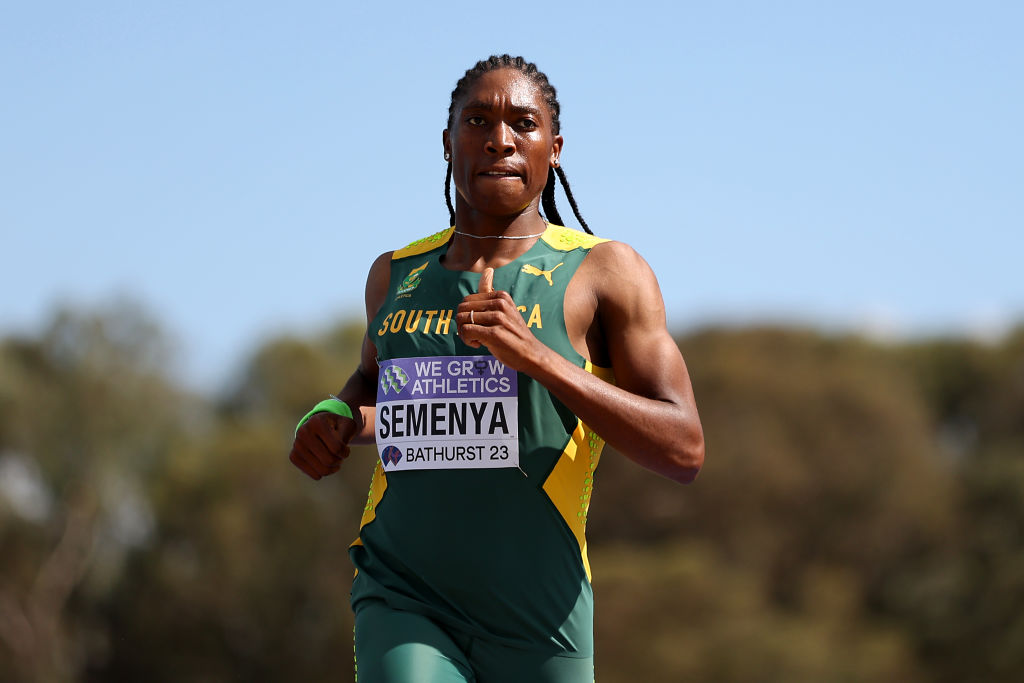What transphobes put Imane Khelif through shows us how dangerous transphobia can be to all women—trans, cis, intersex and nonbinary alike.

Olympic athlete and women’s boxing gold medalist Imane Khelif recently became a target for anti-trans activists and know-it-all couch potatoes. They decided Khelif was a man based on her perceived appearance and strength, rather than actual facts.
So hyped are the anti-trans police that any woman who doesn’t seem to conform to gender norms is suspect and fair game, particularly if she’s public and successful. This is dangerous for all women, no matter their gender identity, and especially women of color.
Transphobia and Women’s Sports
In recent years, transphobes have become fixated on the possibility of trans women’s participation in women’s sports. They argue that trans women are actually men whose biological advantage is unfair to women participating in sports. While the conversation about trans women’s participation in women’s sports is one that should be a complex, nuanced and compassionate discussion about what constitutes physical advantage, we instead find name-calling, misgendering and self-righteous performances.
After all, few trans women actually compete in women’s sports, especially at elite levels. Some do and are good at it—like swimmer Lia Thomas, who was recently banned from professional women’s swimming competition. Thomas went through male puberty and developed an advantageous physique for swimming. That doesn’t mean Thomas won every event in which she swam, but she won enough to be perceived as a threat to “real” women swimmers.
Thomas is a good example of why we do need to have a reasoned conversation about gender and sports. The problem is that those opposed to trans participation in sports want to make sweeping generalizations and ban all trans women from participating. In that sense, these so-called gender-critical feminists are falling right back into patriarchal notions about men and women, especially the idea that men are always physically superior to women. Excluding all trans women from women’s sports simply because they’re trans ignores that some cis women can be stronger and faster than cis men and that trans women do not have the same biological advantage they had before transitioning if they’re on hormones.
The problem isn’t trans women’s bodies, it’s the ways that sport as a social system is constructed to maintain the patriarchy, feeding the illusions of the gender binary. Blaming a handful of trans women for wanting to play women’s sports doesn’t address the systemic problems of sport as an institution of patriarchy.
By positioning themselves as defenders of women, transphobes can offer a performative concern for women. They make a big deal of speaking out against trans women in sports as a threat to women. Yet somehow, they are strangely silent on the things that actually harm women, like domestic violence, sexual assault, income inequality, sexual harassment and so on. Transphobia against trans women athletes can make transphobes feel like good feminists, but excluding all trans women from all sports does nothing good for women. It harms them.
So-called gender-critical feminists are falling right back into patriarchal notions about men and women, especially the idea that men are always physically superior to women.

Transphobia in Women’s Sports Harms All Women
If we accept transphobes’ arguments against all trans women in all sports, we inevitably accept a set of assumptions that harm women, trans and cis alike.
The first assumption is that biology is destiny. The transphobic argument assumes that bodies born as male are destined to be superior to bodies born as female (or intersex, but that’s another problem on its own). Trans women must be better than cis women in sports because men are always better than women in sports.
The harm of that assumption, however, is much greater than sports. Vice presidential candidate JD Vance thinks that women’s biology makes them good only for child-bearing and child-rearing. He says that women without children don’t care about our nation’s future—they are, in his worldview, childless cat ladies—and women who are post-menopausal should help raise their grandchildren. If child-bearing and child-rearing are women’s biological destiny, the implications for families, work, law and every other social institution are profound—and not in ways that empower cis or trans women.
The transphobic argument … assumes that trans women must be better than cis women in sports because men are always better than women in sports.
The second assumption is rooted in the first. Because biology is binary, men and women are fundamentally different, so much so that men should be only masculine and women should be only feminine.
Here’s where Khelif got caught in the transphobes’ crosshairs.
When we saw her boxing, she didn’t look like a ‘girly girl’ (though there’s nothing wrong with being a ‘girly girl’ either). She didn’t match the transphobes’ expectations of women based on their notions of the biological binary. So they assumed she was trans. But she’s not. She’s a cis woman.
So powerful was this attack that Khelif felt compelled to release a video of herself after the Olympics, dolled up in uber-feminine hair, makeup and clothes. If that’s who Khelif truly is, good for her. I’m just sorry she felt compelled to prove she’s feminine enough.
Even so, the grand dame of transphobes, JK Rowling, simply doubled down, demanding Khelif reveal DNA results to “prove” she’s a woman.
For those of us who may not look quite feminine enough (and who gets to define that anyway?), we are at risk of being targeted as trans women. Here’s one more reason cis women, and especially feminists, ought to line up on the side of trans women: Any one of us could purposefully or accidentally transgress binary gender and become at risk for violence.
Third, if we apply the biology is destiny argument to sexuality, we reinforce heteronormativity. If biology means women are for child-bearing and child-rearing, it also means they must have a man to make a child with. We see enough attacks on LGBTQ+ people who want to become parents to know this is true.
We also know that norms of femininity are applied differently to women of color. If transphobia puts cis and trans white women at risk, the risk is exacerbated for women of color, especially those like Khelif and Caster Semenya.

Transphobia against trans women athletes narrows the range of what it means to be a woman. That’s part of why I’m surprised that tennis great Martina Navratilova has jumped so firmly on the anti-trans train. I remember how often people questioned if Navratilova really was a woman while she played. What might have happened to her if she’d had to undergo gender-testing back in the day? Maybe she had a little too much testosterone. Maybe it’s all still painful enough that she’s identifying with the oppressor instead of standing with gender diverse women. Maybe transphobia lets her draw an imaginary line between herself and those others who “really aren’t women.”
Who knows? But we do know that what transphobes put Imane Khelif through shows us how dangerous transphobia can be to all women—trans, cis, intersex and nonbinary alike.
At Ms. magazine, our mission is to deliver facts about the feminist movement (and those who stand in its way) and foster informed discussions—not to tell you who to vote for or what to think. We believe in empowering our readers to form their own opinions based on reliable reporting. To continue providing you with independent feminist journalism, we rely on the generous support of our readers. Please consider making a tax-deductible donation today if you value the work we do and want to see it continue. Thank you for supporting women’s voices and rights.





